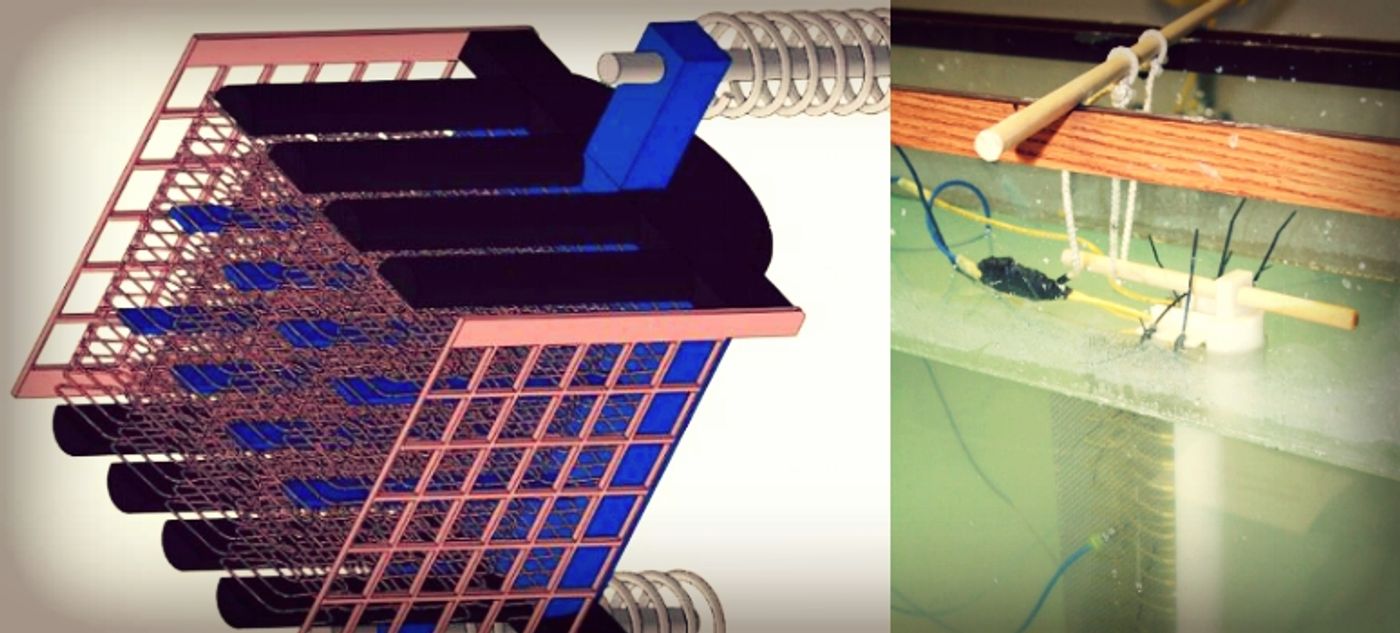Duke's Prototype for Water Cloaks
Researchers from Duke University are developing strategies to cloak objects and vessels moving through the ocean, and have proven that such an accomplishment is now feasible. An idea for an innovative “water cloak” was first conceived at Duke in 2011. It centered on the premise that manipulating the speed of the water moving around a traveling object could cause less disturbance in the surrounding waters.
While early schematics called for a complex system of pumps, in 2017, Adjunct Assistant Professor of Electrical and Computer Engineering Yaroslav Urzhumov came up with a different model that would utilize wires and coils to create an electromagnetic field around an object in order to control the surrounding saltwater.
The main forces the scientists seek to hide in order to cloak an object moving through water are drag and wake. When water resists changes in its velocity (being moved), its inertia creates a drag or opposing force. A press release explains that because water is relatively viscous (thick), the water moved by an object tends to bring other water along. The wake is produced when the water is moved out of the way as the object passes through, making waves. Drag and wake make it easy to visually detect objects in the water, so removing or neutralizing them can produce a cloaking effect. The team at Duke is working to achieve this by using an electromagnetic field to control the movement of ocean water around an object.
“The original idea was so big that it enticed colleagues at the Naval Undersea Warfare Center to help us pursue it, even though they were incredibly skeptical. Since then, we have identified a path to materializing this seemingly impossible proposal,” Urzhumov says.
Ions (positively or negatively charged atoms or groups of atoms) like potassium, sodium and magnesium serve as conductors in seawater; they allow the water to conduct electricity. The proposed cloaking device uses wires and coils to create an electromagnetic field (EMF) -- an invisible area of energy that is an electrical and magnetic field combined -- around an object in the water. The field can push and accelerate the ions with electricity. This is called ion propulsion. Ion propulsion allows the device to move and control the speed of the water around an object or vessel.
The EMF field cloaking experiment also falls into the realm of “magnetohydrodynamic” forces: how magnetic fields control currents in moving fluids. In 1991, Japan built a passenger ship that was propelled in this manner but did not find it had an advantage over other propulsion systems.
Urzhumov and graduate student Dean Culver were able to show in simulations that controlling the velocity and direction of the water around an object in this way can align the movement of the water within the cloaked area with the water outside it, essentially erasing any evidence of the object traveling through the fluid. However, real-life applications at this point would be imperfect and some drag and wake would probably still be detectable.
Urzhumov explains that in practical usage, this method would currently require an enormous amount of power; a large ship or submarine might require a nuclear reactor, in fact. But, he adds that a diesel-powered vessel of smaller size might be able to use a similar cloaking device to the one they are proposing. Urzhumov believes his theories can have positive impacts on other fields as well, such as spacecraft propulsion.
“Forced Underwater Laminar Flows with Active Magnetohydrodynamic Metamaterials” was published in Physical Review E in December 2017. The research was supported by the Office of Naval Research through the Naval Undersea Research Program and the Multidisciplinary University Research Initiative.









